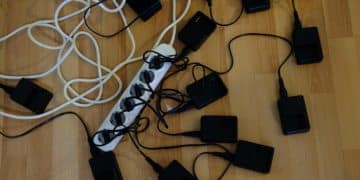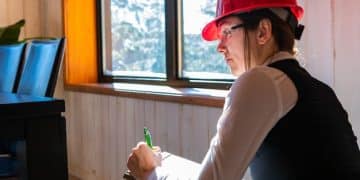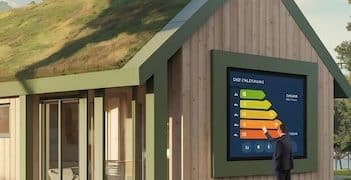DIY Home Energy Audit: Find Leaks and Save 15%
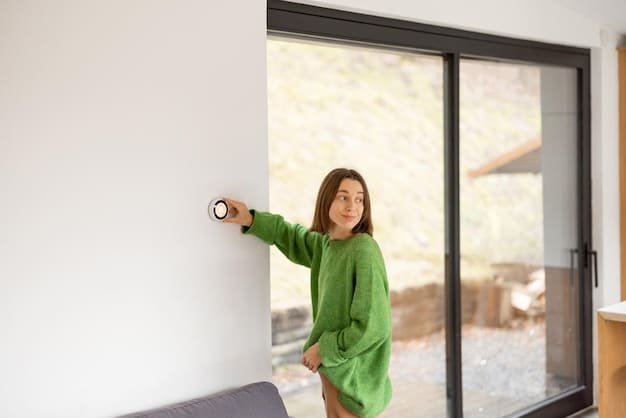
Discover hidden energy leaks in your home and potentially save up to 15% on energy bills by conducting a simple DIY energy audit.
Is your energy bill higher than you expect? You might be losing energy through unseen leaks around your home. A DIY home energy audit can help you identify these problems and take steps to save money and improve your home’s efficiency.
Why Conduct a DIY Home Energy Audit?
A home energy audit is a comprehensive assessment of your home’s energy efficiency. It identifies areas where energy is being wasted, allowing you to make targeted improvements. Conducting a DIY audit is a cost-effective way to pinpoint these issues before calling in a professional.
Benefits of a DIY Energy Audit
Performing your own energy audit offers numerous advantages beyond potential cost savings. It empowers you to understand your home’s energy usage and make informed decisions about improvements.
- Save Money: Identify and fix energy leaks to lower your monthly bills.
- Increase Comfort Seal drafts and improve insulation for a more comfortable living environment.
- Reduce Environmental Impact: Use less energy, reducing your carbon footprint.
- Improve Home Value: Energy-efficient homes are more attractive to buyers.
By understanding the areas where your home is losing energy, you can prioritize improvements that offer the greatest return on investment.

Tools and Equipment Needed
Fortunately, performing a DIY energy audit doesn’t require expensive tools. Many of the items you’ll need are likely already in your home. Here’s a list of essential equipment:
Basic Tools for Your Audit
Having the right tools on hand will make the audit process smoother and more accurate. Consider gathering these items before you begin:
- Flashlight: For inspecting dark corners and crawl spaces.
- Measuring Tape: To measure window and door dimensions for weather stripping.
- Incense Stick or a Lighter: To detect drafts around windows and doors.
- Notebook and Pen: To record your findings and plan improvements.
Step-by-Step Guide to Performing Your DIY Audit
Now that you have the necessary tools, it’s time to get started with your home energy audit. Follow these steps to systematically assess your home’s energy efficiency.
Inspect Windows and Doors
Windows and doors are common sources of energy loss. Carefully inspect them for drafts, gaps, and worn weather stripping.
Feel around the edges of windows and doors for drafts, especially on windy days. Use an incense stick or lighter to visually confirm air leaks, noting their severity and location.
Examine Insulation
Proper insulation is crucial for maintaining a comfortable temperature and reducing energy consumption. Inspect your attic, walls, and crawl spaces for adequate insulation.
- Attic: Check the insulation level and ensure it’s evenly distributed.
- Walls: Look for gaps or compression in the insulation.
- Crawl Spaces: Ensure insulation is in place and not damaged by moisture or pests.
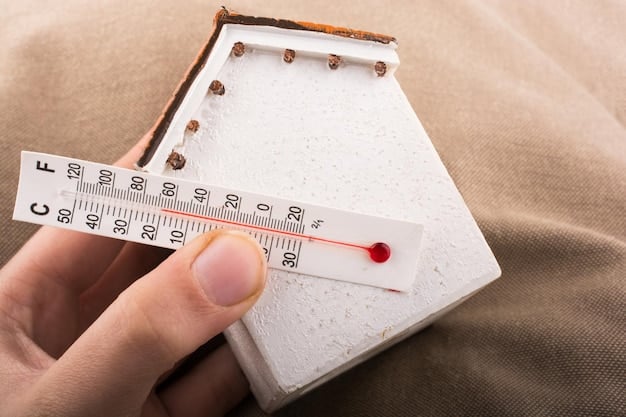
Identifying Common Energy Leak Areas
Certain areas in your home are more prone to energy leaks than others. Knowing where to focus your attention can streamline the audit process and help you identify the most significant problems.
Attic Access Points
Attic hatches and pull-down stairs are often poorly insulated and can be a major source of heat loss in the winter and heat gain in the summer.
Ensure the attic access point is properly sealed and insulated. Consider adding weather stripping around the perimeter or installing an insulated cover.
Electrical Outlets and Switches
Even seemingly small gaps around electrical outlets and switches can contribute to significant energy loss over time.
Install foam outlet and switch plate gaskets to seal these gaps. These are inexpensive and easy to install, providing an effective barrier against air leaks.
Analyzing Your Findings and Planning Improvements
Once you’ve completed your DIY energy audit, it’s time to analyze your findings and prioritize improvements. Focus on the areas where you’ve identified the most significant energy leaks.
Prioritizing Energy-Saving Projects
Not all energy-saving projects are created equal. Some offer a higher return on investment than others. When prioritizing improvements, consider the following factors:
- Cost: Evaluate the upfront cost of the project.
- Savings Potential: Estimate the potential energy savings.
- Ease of Implementation: Consider the difficulty of the project and whether you can do it yourself or need to hire a professional.
Implementing Energy-Saving Measures
With your improvement plan in place, it’s time to start implementing energy-saving measures. Here are some common DIY projects you can tackle to improve your home’s energy efficiency.
Sealing Drafts and Cracks
Sealing drafts and cracks is one of the most cost-effective ways to improve your home’s energy efficiency. Use caulk or weather stripping to seal gaps around windows, doors, and other openings.
Apply caulk to seal cracks and gaps around window and door frames, as well as where pipes and wires enter the house. Install weather stripping around door and window frames to create a tight seal.
| Key Point | Brief Description |
|---|---|
| 🔎 Identify Leaks | Find hidden drafts around windows, doors, and outlets. |
| 🌡️ Check Insulation | Ensure adequate insulation in attic, walls, and crawl spaces. |
| 🛠️ Seal Gaps | Use caulk and weather stripping to seal openings. |
| 💰 Save Money | Reduce energy bills by fixing identified issues. |
[titulo da seção FAQ em en-US]
Frequently Asked Questions (FAQ)
▼
It is recommended to perform a thorough home energy audit at least once a year, preferably before the start of each heating and cooling season. This helps in identifying any new leaks or areas needing attention.
▼
The most common areas for energy leaks include windows, doors, attics, basements, and any cracks or gaps in the building’s exterior. Properly sealing and insulating these areas can significantly reduce energy waste.
▼
Yes! By identifying and fixing energy leaks, you can reduce your energy consumption and lower your monthly utility bills. Simple fixes like weather stripping and sealing gaps can make a big difference.
▼
If you encounter issues that require professional help, such as extensive insulation work or HVAC repairs, it’s best to consult with a qualified contractor. They can provide the expertise needed for complex repairs.
▼
Setting your thermostat to 68°F (20°C) in the winter and 78°F (26°C) in the summer can help you save energy. Also, consider using a programmable thermostat to adjust temperatures automatically when you’re away or asleep.
Conclusion
Performing a DIY home energy audit is an excellent way to save money on your energy bills and make your home more comfortable and energy-efficient. By following the steps outlined in this guide, you can identify energy leaks, implement simple fixes, and potentially save up to 15% on your energy costs. Take the time to assess your home’s energy efficiency and enjoy the benefits of a more comfortable and sustainable living environment.
